| Large SUV; Built in USA, Mexico |
|
|
| Good condition price range: $1,400 – $5,300* |
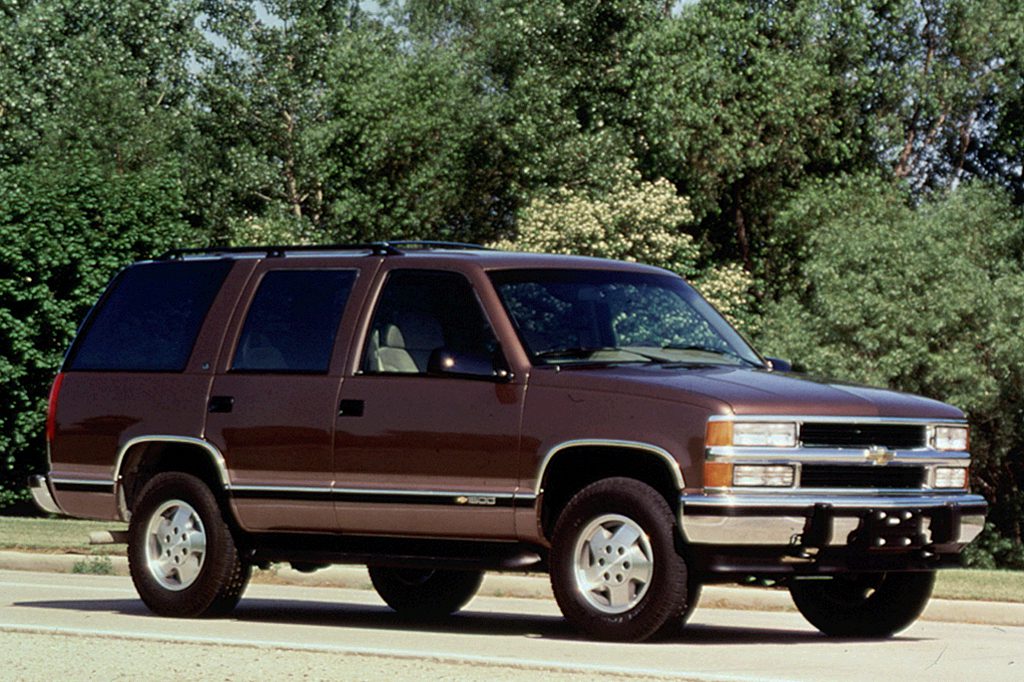
1995 Chevrolet Tahoe C1500 4-door wagon
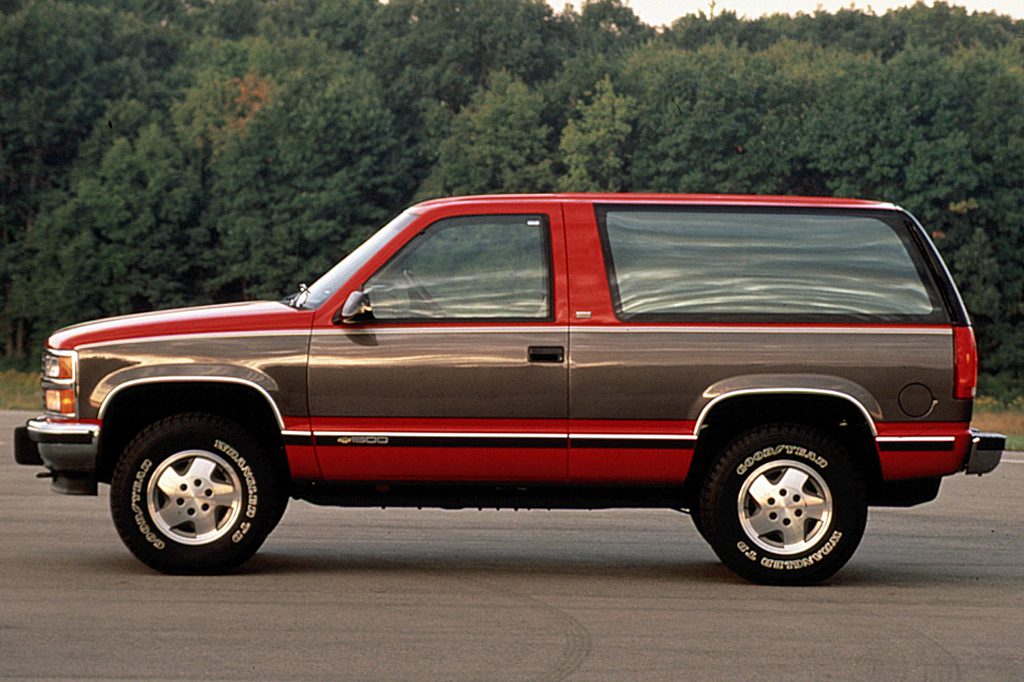
1993 Chevrolet Blazer K1500 2-door wagon
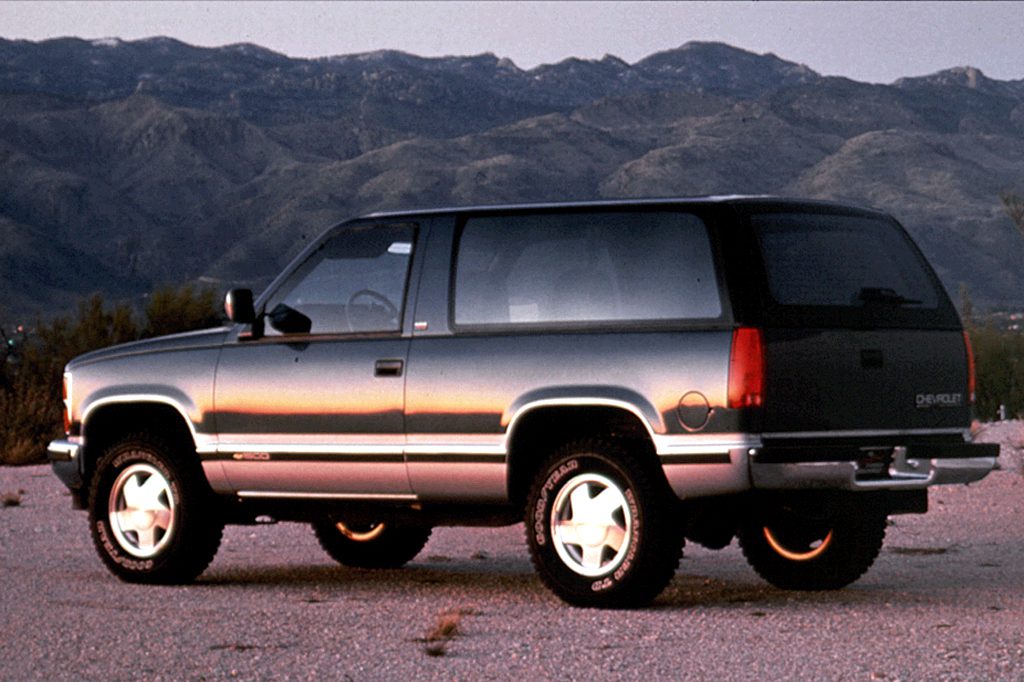
1992 Chevrolet Blazer K1500 2-door wagon
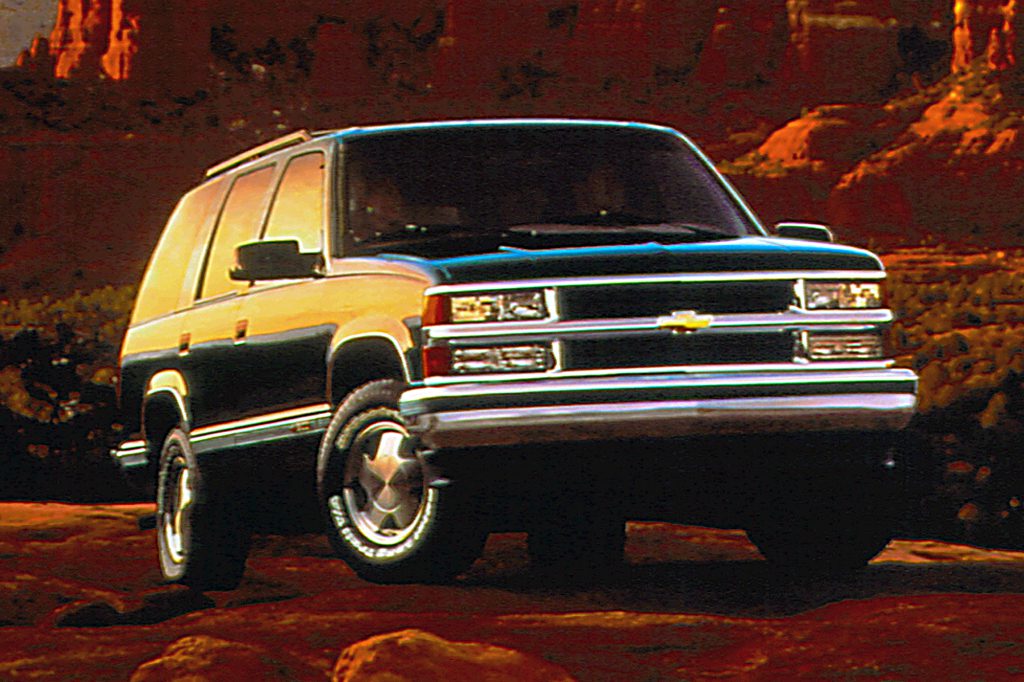
1997 Chevrolet Tahoe LT 4-door wagon
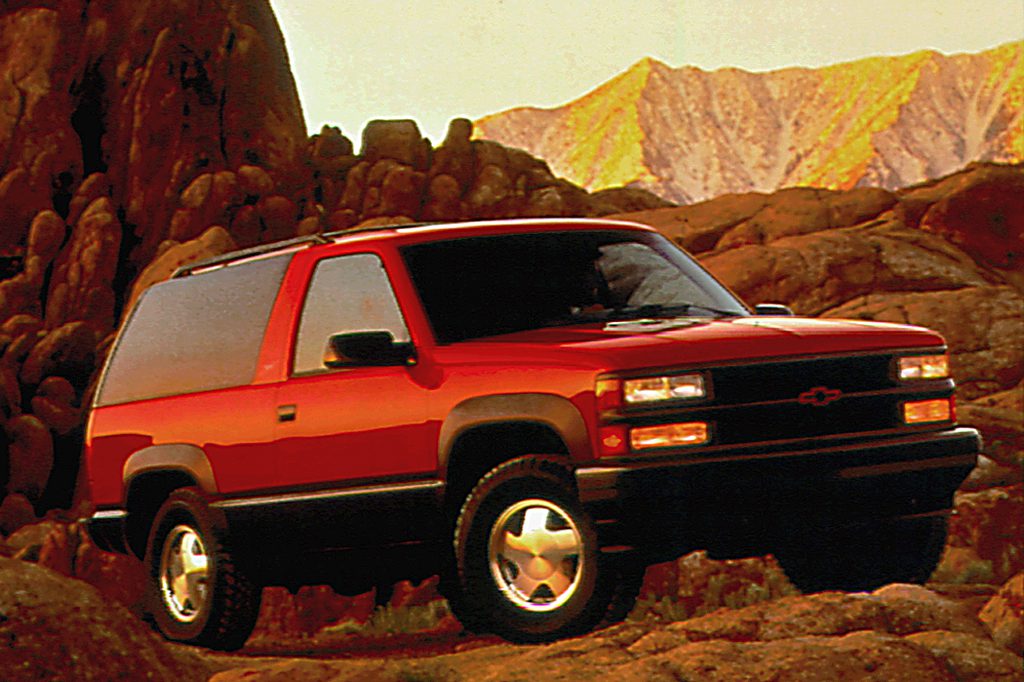
1997 Chevrolet Tahoe LS 2-door wagon
| Pros: |
|
| Cons: |
|
Sure, a compact sport utility is more sensible and economical for everyday driving. But if you require real muscle, especially for towing, try the 4-door Tahoe and also Ford’s Expedition.
Overview
Chevy’s full-size Blazer 4-wheel-drive sport utility and its GMC Yukon counterpart were redesigned for 1992. Passenger capacity rose from five to six. Wheelbase grew by five inches, overall length by three. A 2-door wagon was again the only body style, with a tailgate and top-hinged window at the rear. Standard antilock brakes now worked on all four wheels, in both 2- and 4-wheel drive. Only one engine was available: a 5.7-liter gasoline V8, delivering 210 horsepower. A 5-speed manual gearbox replaced the 4-speed unit, with 4-speed automatic again optional. All models had Insta-Trac 4WD.
Yearly Updates
| 1993 Blazer An electronically controlled automatic transmission went into ’93 Blazers, and claimed to deliver smoother and more-precise shifts. |
| 1994 Blazer A turbodiesel V8 engine option arrived in 1994. Side-door guard beams and a center high-mounted stoplamp were installed. The 2-door wagon was still the only Blazer body style. |
| 1995 Tahoe Chevrolet’s version changed its name from Blazer to Tahoe, and a driver-side airbag was installed. A 4-door wagon arrived in spring 1995, available with either 2- or 4-wheel drive. The 4-door model rode a wheelbase six inches longer and measured 10.6 inches longer overall. The standard V8 dropped ten horsepower, to 210. |
| 1996 Tahoe The standard 5.7-liter V8 jumped from 200 to 250 horsepower for ’96, when daytime running lights were installed. No more manual-shift Tahoes were available as all had a 4-speed automatic. A 2WD 2-door model joined the lineup, so both the 2-door and 4-door could have either 2WD or 4WD. A newly optional electronic transfer case allowed switching between 2WD and 4WD by touching dashboard buttons. |
| 1997 Tahoe A passenger-side airbag went into ’97 models. Also, a new center console was included with bucket seats, and contained a fold out writing surface. The 5.7-liter V8 gained five horsepower. |
| 1998 Tahoe Tahoe’s big news is a full-time 4WD system. Called Autotrac, the newly optional system allows the use of 4WD on any surface. |
| 1999 Tahoe The ’99 Tahoe arrived early in 1998, but there were no changes. |
| 2000 Tahoe Chevrolet redesigned the Tahoe for 2000, with new V8 engines. However, specialty versions of the 1995-99 vintage Tahoes remained, sold alongside the all-new 2000 models. The Tahoe Limited and Z71 remained available only through part of the year. Both used the 5.7-liter, 255-horsepower V8. The Z71 featured off-road-oriented equipment, including Autotrac 4-wheel drive. The style-conscious Limited came only with rear-wheel drive and was built around police-package equipment. |
